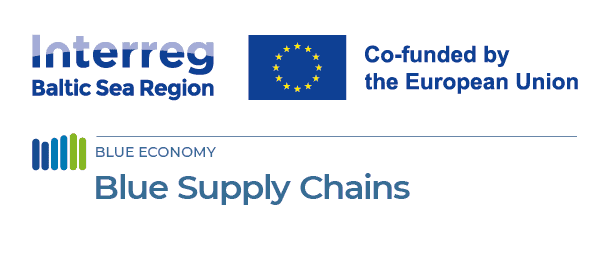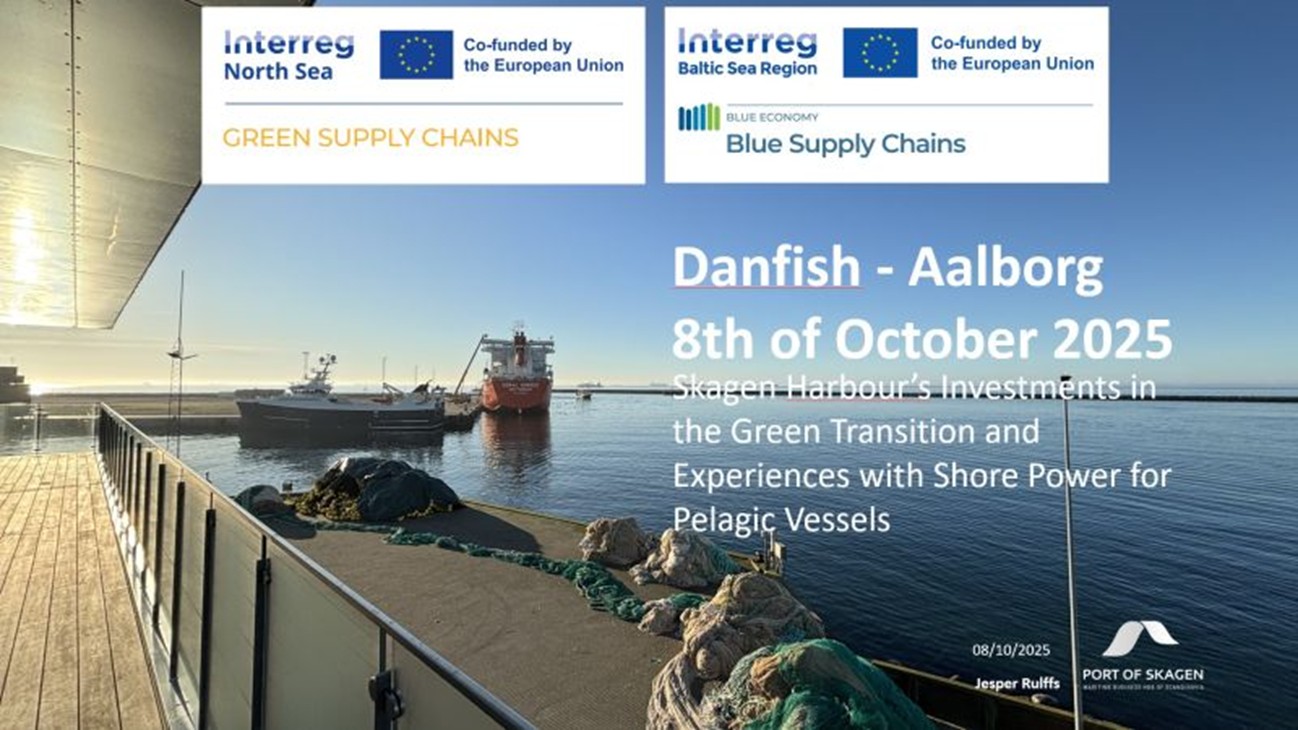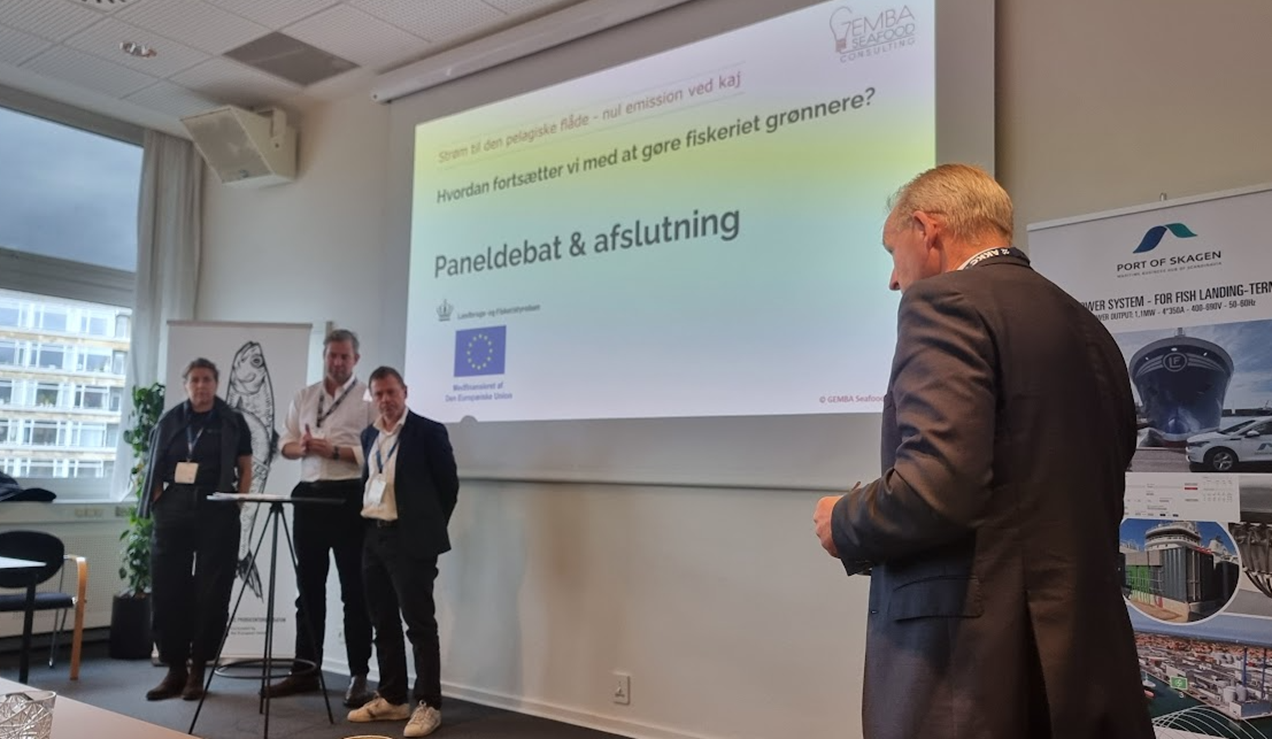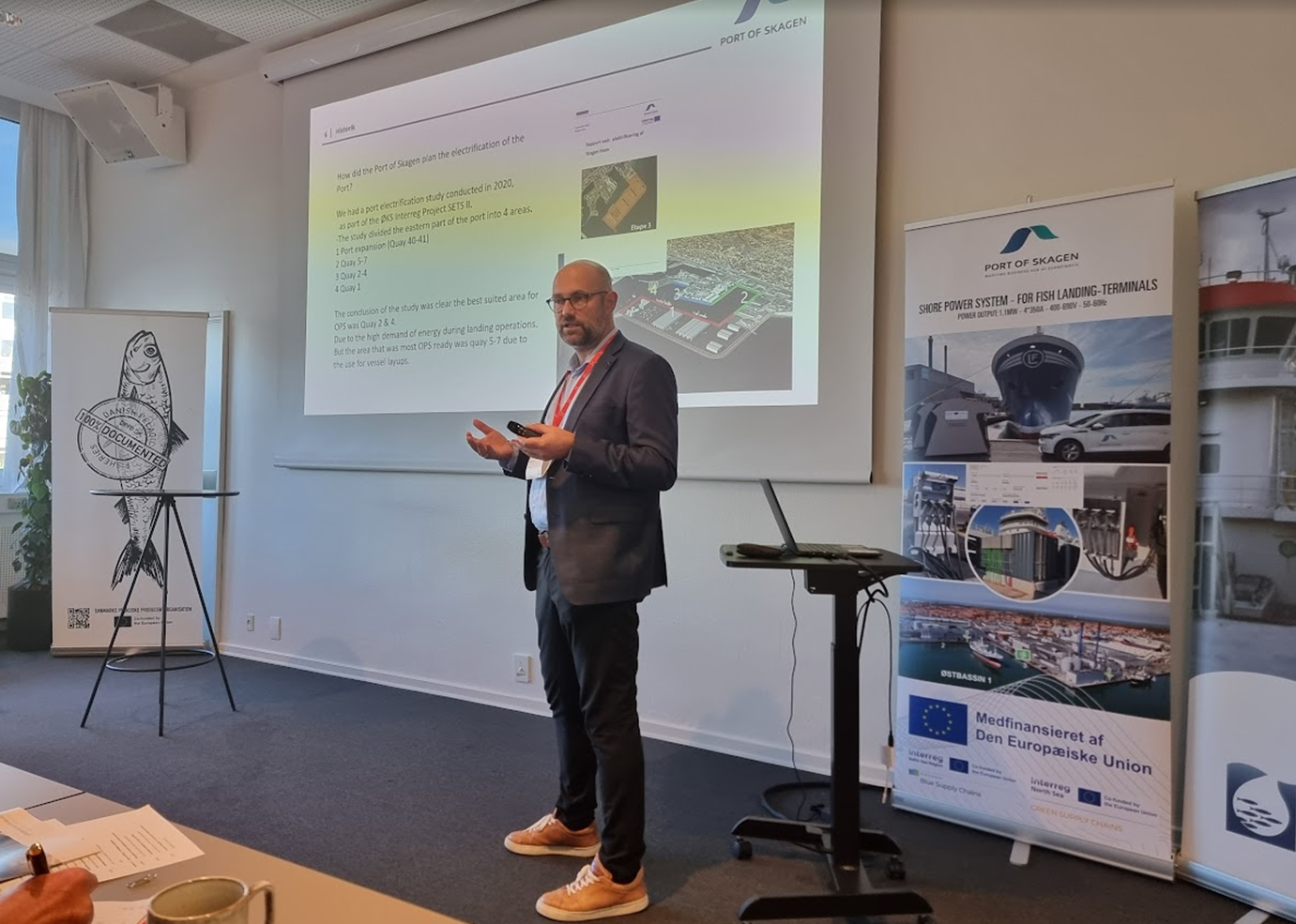
Green Ports Driving Zero Emissions: Blue Supply Chains at DanFish 2025
21 October 2025
The event took place during DanFish International 2025 — one of Northern Europe’s largest and most influential trade fairs for the fishing and maritime industries — hosted at the Aalborg Kongres & Kultur Center in Denmark 🇩🇰.
A Step Towards Zero-Emission Ports
The seminar was organised by the Danish Pelagic Producers Organisation (DPPO) and Skagen Havn, both key actors in Denmark’s green maritime transition.
It presented the outcomes of the national project “Strøm til den pelagiske flåde – nul emission ved kaj” (Onshore Power Supply for the Pelagic Fleet – Zero Emission at Berth).
This initiative focuses on the installation and use of onshore power supply (OPS) systems that enable fishing vessels to connect to the electricity grid while in port.
By replacing onboard diesel generators with clean electricity, OPS can reduce CO₂ emissions by up to 100% during port stays, while also improving local air quality, reducing noise pollution, and creating healthier working conditions for crews and port workers.
Broad Stakeholder Engagement
The event gathered around 45 participants from across the maritime sector — including port authorities, vessel owners, technology providers, policymakers, and representatives from Danish and international ports, the Danish Fisheries Agency, and the marine equipment industry.
Through this dialogue, participants exchanged insights on the technical maturity, environmental benefits, and financial barriers linked to OPS deployment.
Key Insights and Outcomes
Discussions confirmed that OPS is a proven and reliable technology, already functioning successfully in several ports across the Baltic and North Sea regions.
However, the main barrier remains economic: high investment costs for vessels and shore infrastructure can limit uptake, and there is a strong need for stable, long-term funding mechanisms at both national and EU levels to accelerate the transition.
Stakeholders also underlined that OPS implementation contributes directly to Environmental, Social and Governance (ESG) and Corporate Sustainability Reporting Directive (CSRD) requirements, providing tangible and measurable benefits for sustainability reporting across the seafood value chain.
Finally, participants agreed that standardisation and coordinated investments between ports are essential to maximise the environmental and economic impact of OPS. Harmonised technical specifications and common approaches can reduce costs, ensure interoperability, and support the wider decarbonisation of maritime logistics.
Contribution to the Blue Supply Chains Project
This Danish initiative complements the goals of Blue Supply Chains by demonstrating how green port investments and zero-emission technologies can be scaled through collaboration, innovation, and shared learning across the Baltic Sea Region.
Participation in events like DanFish supports BSC’s mission to develop climate-neutral, efficient logistics chains and strengthen the sustainability and competitiveness of the maritime industry.
“Onshore power supply is a clear example of how ports can lead the way in reducing emissions and improving working environments — while also aligning with wider ESG and CSRD frameworks,” said Jesper Rulffs from Port of Skagen.








